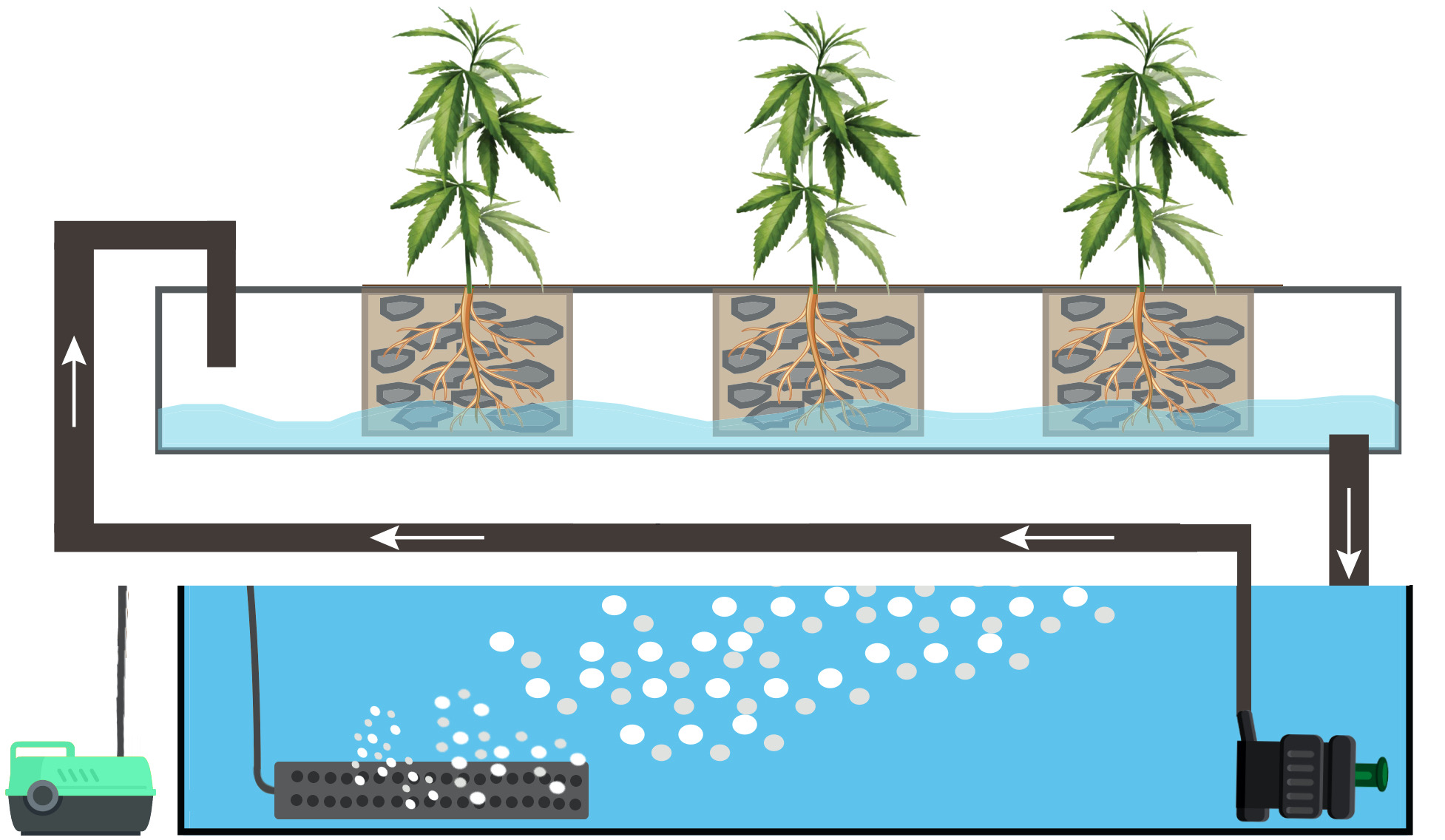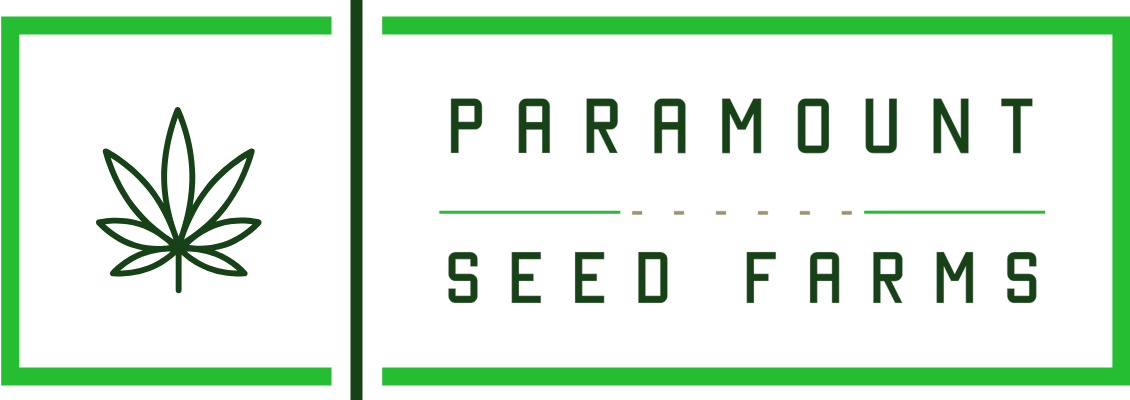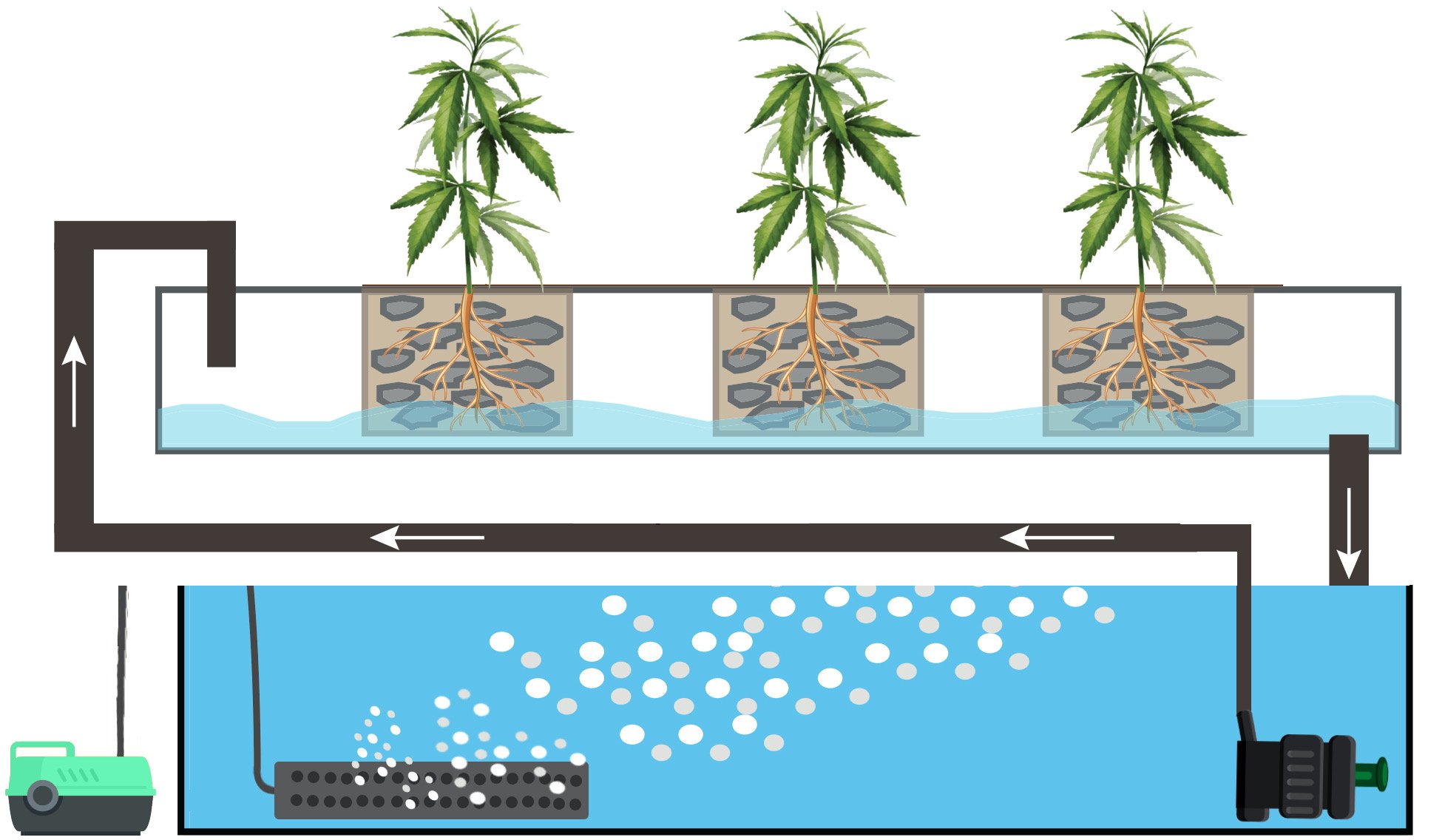What is NFT?
NFT, or Nutrient Film Technique, is a highly efficient and productive hydroponic system that has been used by advanced hydroponic growers for many years.
It works by continuously cycling water and nutrient solution through a shallow film of water, allowing the roots of the plants to absorb the nutrients they need without the need for a growing medium.
NFT is known to be one of the most effective single hydroponic systems available, and has been proven to produce some amazing results.
Why use NFT over other systems like simple Pots?
- Fast growth and bigger yields – you can achieve up to three times the yield of regular growing in soil;
- Simplicity – It is actually a very simply operation once set up, it is the set up that needs time and dialling in;
- Water efficiency – NFT systems are recirculating and self contained so water loss is kept to an absolute minimum;
- Accurate feeding – You plants take on as much nutrient solution as they require. They are not soaking in nutes or drying out, they have exactly what they need;
- Fewer pests – No soil or growing medium reduces the places that can harbor pests.
Although the concept and mechanics of the system are simple to understand and operate, we would class this as the next step up from a basic Wick System or DWC system.
- The price for the extra productivity is a finely balanced system that can be sometimes be prone to problems.
- A simple overnight power outage could ruin the whole system and kill your plants.
- It is also necessary to provide the three basic hydroponic requirements (air, water, nutrients) in a more balanced way than with some simpler systems. For these reasons we recommend setting up a NFT system if you are an intermediate or advanced hydroponic grower.

The effectiveness of NFT as a productive hydroponic cultivation technique is evinced by its common use on large scale commercial operations for everyday crops. Check out this commercial lettuce system.
How Does NFT Work?

Although the hydro in hydroponics stands for water, providing air to the plants’ roots is just as important a part of the process.
NFT systems provide air to the roots by exposing most of the root mass to the air permanently.
Plants are grown in long, thin channels and held in place with net pots or neoprene collars. A thin layer of nutrient solution is circulated along the bottom of the channel, providing sustenance to the plants. The space between the roots of the suspended plants and the nutrient solution at the bottom is kept out of the liquid and is exposed to the air.
There are 3 important factors to consider with NFT systems:
Gradient (or Slope)
- The angle at which the trough is placed is very important to the way that the nutrient solution flows. With NFT systems it is crucial that the solution is not allowed to pool or gather around the roots. Standing water will lead to root rot and negate the benefits of this system;
- Normally the slope is created during the set up of the system by placing the channels in a framework or on benches, or even on a sloping floor;
- Even with well designed systems it can be difficult to fabricate a channel that does not allow the solution to pool. Drain fittings, channel joints and even imperfections and depressions in the surface of the channel can cause fluid to gather in puddles. So, although a very shallow gradient (say 1:100 – 1%) is theoretically considered to be best, in practice you will probably be looking at a slope of 1:30 (3.33%) or even 1:40 (2.5%);
- The actual gradient used will depend on the site specific factors of your set up, such as building materials, length of channel, framework etc…
Flow Rate
- The rate of flow of your nutrient solution dictates how much of the dissolved nutrients is available to your plants. It also, in conjunction with the gradient, dictates the depth of nutrient solution at the bottom of the channel, and this is key to the success of the system;
- As the name suggests, the system only requires a thin film of nutrient solution to work effectively. Run it too deep and you are defeating the purpose, too thin and there will not be enough nutrients available to your plants. Flow rate is obviously a result of the gradient and pump and, as a consequence, will be specific to your own individual set up;
- As a rule of thumb a rate of 1 liter (1 ¾ pints) per minute should be your target flow rate. When introducing new plants to the system you may need to reduce this to around 500ml (4/5 of a pint) per minute. At the other extreme, an upper limit of 2 liters (3 ½ pints) per minute should be adhered to. Flow rates out of these limits may cause nutrient uptake issues.
Length of Channel
- Some systems use nutrient oxygenation to further boost the oxygen available to the root system. This can be done with either an air stone in the reservoir or by allowing the solution to ‘fall’ back into the reservoir during its recirculation;
- The length of the channels that you use has an important effect on the oxygen levels of your nutrient solution. If the channel is too long the oxygen content of the solution will become depleted by the time it reaches the end of its run;
- The actual maximum length of the channel you use will obviously depend on factors such as your flow rate, gradient and number of plants. As a rule you should not exceed 30 – 40 feet. Longer channels for commercial set ups are possible if you place multiple nutrient feeds, injecting your nutrient solution into the channel, at intervals along the length of it. Flow rates would then obviously need adjusting so that the minimum and maximum flow rates are not exceeded at any point in the system.
Evolution of the NFT System

Nutrient Film Technology was first developed in the United Kingdom during the late 1960s by Dr Allan Cooper. It was Cooper who realized that flat bottomed channels made for the most efficient nutrient exchange. Original systems used polythene sheets to enfold the roots but these soon ran into problems. Fold and creases in the polythene caused blockages and pooling which in turn led to root rot. Suspension wired used to hold the sheets up just got in the way and blocked oxygen flow to the roots. The next step was to use capillary matting to improve flow and provide a temporary nutrient reservoir in case of interruptions in the nutrient flow. However there were still some problems with root mats limiting oxygen uptake and a build up of waste gases. It was then that the innovation of suspending the plants above the channel in net pots came into being. Using this system, which is widely used nowadays, ensures that there is plenty of room for the roots to breathe and for the nutrient film to flow unhindered.

DIY Cannabis NFT Hydro System
With basic DIY skills, you can easily construct your own Nutrient Film Technique (NFT) system. To do this, you can use either PVC piping or commercially available downpipes to create the channel element. Cut holes at intervals along the length of the tube, then insert your net cups or collars. The tubing needs to be mounted at the correct gradient, then plumbed in a feed from the reservoir. Finally, an outlet at the end of the channel that returns to the reservoir completes the system.
To ensure success, it is important to understand the concepts of NFT and how all the components work together. Here are some tips to help you:
– Use PVC tubing or commercially available downpipes to create the channel element.
– Cut holes at intervals along the length of the tube and insert your net cups or collars.
– Mount the tubing at the correct gradient.
– Plumb in a feed from the reservoir.
– Create an outlet at the end of the channel and return to the reservoir.
This simple diagram shows you all of the basic elements that you require. Bear in mind the three factors outlined above.

Controlling Temperature with an NFT System

Maintaining correct temperatures can sometimes be an issue with NFT systems. A long channel can result in a significant temperature change of your solution. At the same time, having the bulk of the root mass exposed to the air, with no growing medium for insulation, can also result in unstable root temperatures. Obviously, both of these issues depend entirely on the ambient temperature of the grow room and the location of the reservoir.
The optimum temperature of your nutrient solution will be around 65 °F to 70 °F (18 °C to 21 °C). As temperatures rise the Biological Oxygen Demand (B.O.D.) of your plants increases and the ability of the solution to contain oxygen decreases. 65°F to 70°F is warm enough to stimulate vigorous growth whilst cool enough for the solution to carry plenty of dissolved oxygen. There is some considerable leeway with this figure but as a rule, try to keep your reservoir temperature within this range. Above all, try to keep them consistent.
Reservoir heating and cooling systems are available if you are having temperature issues with your NFT system. Good reservoir insulation, along with polystyrene pads underneath the channels, should help you maintain consistent solution temperatures. Larger reservoirs will hold their temperature better than smaller ones.
Operating a NFT Hydroponic System
Despite having talked about some common problems and factors involved with NFT systems, once up and running they are easy to maintain. Keeping on top of temperature, pH and the concentration of your hydroponic nutrient solution (PPM/EC) is very important, but this is also true of all hydroponic systems and something you should already be aware of.
These growing tips should help to steer you in the right direction when using a NFT system:
- Spend time running your system and getting all the settings right before you put in your plants. You don’t want to spoil your first crop by still getting to grips with the system;
- As your plants take on lots of water the concentration (EC/PPM) of your nutrient solution will rise. Top up regularly with water and maintain your proper levels;
- Maintain pH levels of somewhere between 5.8 and 6.2;
- Ensure that the channels where the roots are growing are completely light proof. Light penetration will cause algal growth that can clog up the system and contribute towards rot and other problems;
- Completely empty and change the solution in your reservoir every week to 10 days;
- As your roots are bare and supply no real support to your plants, you may need to provide extra support to bud structures as they start to fatten up;
- Give plants plenty of space. Plants in a NFT system can exhibit explosive growth and may take up more space than you imagined;
- Wait until seedlings and clones have a very well established root network before introducing them to the system;
- Fitting a spreader mat between the channel and the reservoir can help reduce noise;
- Be sure to clean the reservoir and all channels thoroughly between grows.
- Nutrient Film Technique hydroponics is an advanced hydroponics system that is often used by the commercial horticultural industry and is proven to provide excellent results.
- NFT systems require careful monitoring and fine adjustments to get right. However, once all the correct factors are dialled in, they can be relatively low maintenance.
- Constructing your own NFT system is achievable at low cost and with rudimentary DIY skills.
NFT Hydroponic System FAQs
What temperature should the water of my NFT hydro system be?
u003cstrongu003eThe optimum temperature of your nutrient solution will be around 65 °F to 70 °F (18 °C to 21 °C)u003c/strongu003e. As temperatures rise the Biological Oxygen Demand (B.O.D.) of your plants increases and the ability of the solution to contain oxygen decreases. 65°F to 70°F is warm enough to stimulate vigorous growth whilst cool enough for the solution to carry plenty of dissolved oxygen

